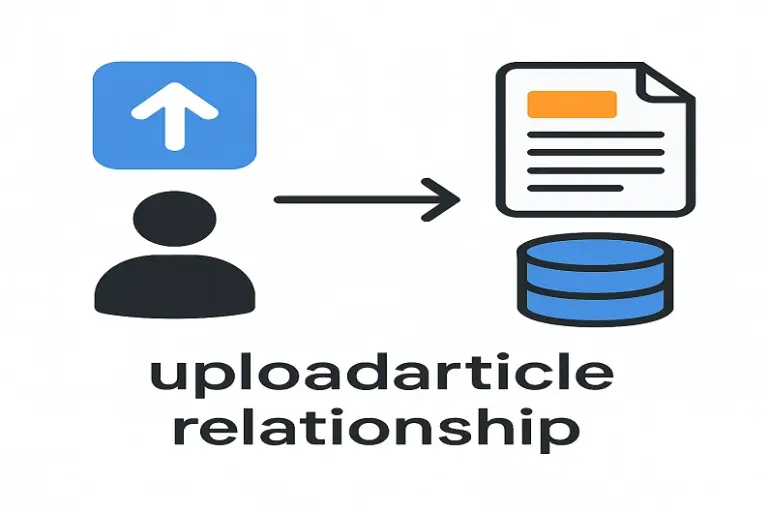Master Insurance UploadArticle: A Step-by-Step Digital Guide
In today’s fast-paced, tech-driven world, the insurance industry has embraced digital solutions to simplify processes for both providers and policyholders. One such innovation is the ability to upload insurance-related documents online—a practice often referred to as an “insurance uploadarticle” (or insurance upload article). This guide will walk you through everything you need to know about this process, its benefits, and how to use it effectively.
What Is an Insurance Upload Article?
An insurance uploadarticle refers to the digital submission of documents, forms, or information required for insurance purposes. Instead of mailing physical copies or visiting an office in person, policyholders can upload necessary files—such as claim forms, medical records, or policy applications—directly to their insurer’s online portal. This method streamlines communication, reduces paperwork, and accelerates processing times.
This practice has become increasingly popular as insurers prioritize user-friendly platforms. Whether you’re filing a claim, updating personal details, or applying for a new policy, uploading insurance documents ensures your data is securely stored and easily accessible.
Read More : uploadarticle contact
Why Uploading Insurance Documents Online Matters
1. Speed and Efficiency
Gone are the days of waiting weeks for mailed documents to reach insurers. Uploading files instantly shares information with your provider, allowing them to review and process requests faster. For time-sensitive claims (e.g., car accidents or medical emergencies), this can make a significant difference.
2. Reduced Errors
Manual data entry is prone to mistakes. By uploading digital documents, you minimize the risk of typos or lost paperwork. Many platforms also include validation checks to ensure all required fields are completed.
3. Eco-Friendly Approach
Reducing paper usage supports sustainability efforts. Digital submissions cut down on printing, mailing, and physical storage needs.
4. 24/7 Accessibility
Most insurance portals are available round-the-clock. Whether you’re submitting documents at midnight or during a lunch break, the process is always at your fingertips.
How to Upload Insurance Documents: A Step-by-Step Guide
-
Log Into Your Insurance Portal
Create an account or sign in to your insurer’s website or mobile app. Look for options like “Upload Documents” or “Submit a Claim.” -
Select the Purpose of Upload
Choose the relevant category (e.g., “Auto Claim,” “Health Records,” or “Policy Renewal”). -
Prepare Your Files
Scan physical documents or save digital files (PDF, JPEG, or PNG formats are widely accepted). Ensure files are clear and legible. -
Upload and Review
Attach the documents, double-check for accuracy, and add any required notes. -
Submit and Confirm
Hit “Submit” and save the confirmation receipt or reference number for future tracking.
Read More : uploadarticle guest posting
Best Practices for Uploading Insurance Documents
-
Use High-Quality Scans: Blurry or cropped files may delay processing.
-
Name Files Clearly: Label documents as “Auto_Claim_JohnDoe_2023” instead of “Document1.”
-
Verify Security: Ensure the portal uses HTTPS encryption to protect sensitive data.
-
Follow Up: Check your email or portal notifications for updates.
Common Types of Insurance Documents to Upload
-
Claim Forms: Required for reimbursement after an incident.
-
Identification Proof: Driver’s license, passport, or Social Security details.
-
Medical Records: For health or disability claims.
-
Policy Applications: When applying for new coverage.
-
Proof of Address: Utility bills or lease agreements.
Read More : uploadarticle. com
Security Concerns: Is Uploading Documents Safe?
Reputable insurers invest in advanced security measures, including:
-
End-to-End Encryption: Protects data during transfer.
-
Multi-Factor Authentication (MFA): Adds an extra layer of login security.
-
Regular Audits: Ensures compliance with data protection laws like GDPR or HIPAA.
Tip: Avoid using public Wi-Fi when uploading sensitive information.
The Future of Insurance Upload Processes
As technology evolves, insurers are integrating tools like AI and machine learning to automate document reviews. For example:
-
AI-Powered Scanners: Detect missing information in real time.
-
Chatbot Assistants: Guide users through the upload process.
-
Blockchain Storage: Enhances data security and transparency.
These advancements will further simplify the insurance uploadarticle process, making it faster and more intuitive.
Read More : uploadarticle .com
Conclusion
The ability to upload insurance documents online—central to the insurance uploadarticle concept—has revolutionized how policyholders interact with their providers. By embracing this digital shift, you save time, reduce stress, and contribute to a greener planet. Always prioritize security, follow best practices, and stay informed about new tools to make the most of this convenience.
Read More : uploadarticle. com hot
FAQs About Insurance Upload Articles
1. What file formats are accepted for insurance uploads?
Most portals accept PDF, JPEG, PNG, and DOCX files. Check your insurer’s guidelines for specifics.
2. How long does it take to process uploaded documents?
Processing times vary, but digital submissions often reduce wait times by 30–50% compared to traditional methods.
3. What if I encounter an error while uploading?
Clear your browser cache, ensure your file meets size/format requirements, or contact customer support for assistance.






